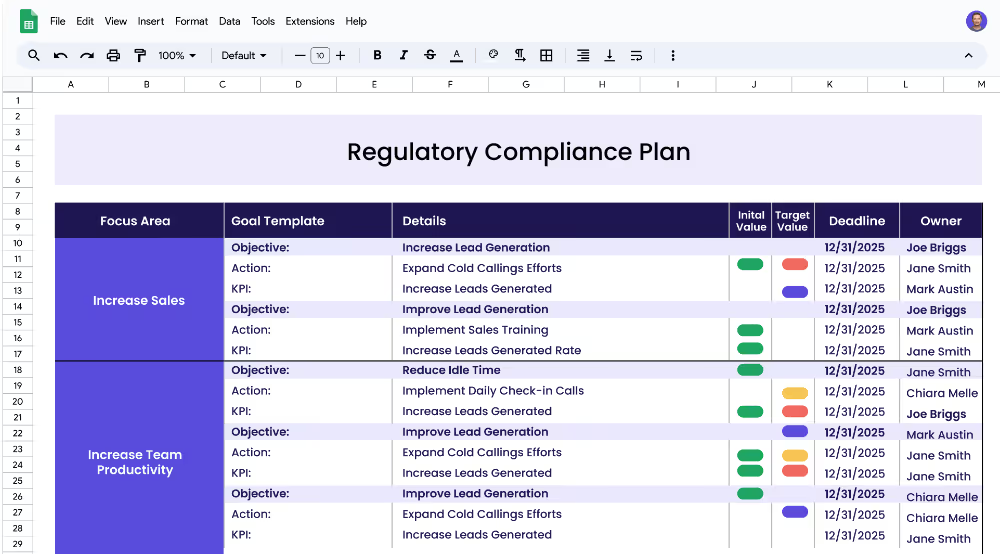A regulatory compliance plan outlines a company's policies and procedures for complying with applicable laws and regulations. The plan aims to identify areas of non-compliance and develop a program to address them. It can help organizations to avoid fines, legal fees and other financial losses associated with non-compliance. It also helps to protect the company from reputational damage and other liabilities.
Each focus area has its own objectives, projects, and KPIs to ensure that the strategy is comprehensive and effective.
The Regulatory Compliance Plan template is designed for legal and compliance teams in organizations of all sizes and industries. It provides a comprehensive framework to create a plan to ensure their operations are compliant with applicable regulations. It includes guidance on how to define focus areas, objectives, measurable targets (KPIs) and related projects that will help the organization achieve its regulatory compliance goals.
When creating a regulatory compliance plan, the first step is to define clear examples of focus areas. These are the broad topics that the organization needs to address in order to achieve regulatory compliance. Common focus areas include data security, employee training, and environmental compliance. It is important to be specific when defining focus areas as it will provide a clear direction for the plan and make it easier to measure progress.
Once focus areas are defined, the next step is to think about objectives that could fall under each focus area. These objectives should be specific, and relevant. They should also be linked to the overall goal of achieving regulatory compliance. Examples of objectives include ensuring regulatory compliance, improving regulatory compliance, ensuring data security and improving data security.
After objectives have been set, the next step is to set measurable targets or Key Performance Indicators (KPIs). KPIs are measurable values that are used to track progress towards an objective. They should be specific, measurable, attainable, relevant and time-bound (SMART). Examples of KPIs include identifying areas of non-compliance, increasing regulatory compliance score, increasing data security score and increasing employee training score.
Once KPIs have been established, the next step is to implement related projects to achieve the KPIs. Projects should be specific, and time-bound . Examples of projects include assessing areas of non-compliance, developing and implementing a compliance program, assessing existing data security measures, and developing and implementing a training program.
If you’re ready to accelerate your strategy and see faster results, consider using Cascade Strategy Execution Software. Unlike spreadsheets, Cascade provides a streamlined platform designed to help you create, track, and execute your strategy with ease. Sign-up for free or book a demo with one of our strategy experts to get started today!


